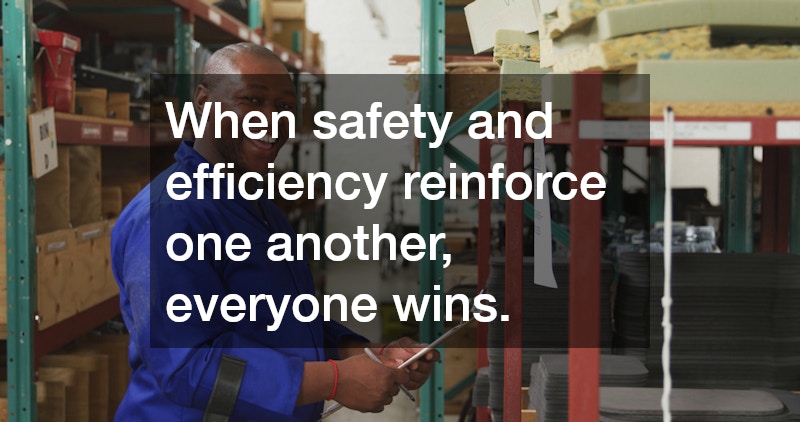Work-at-height safety continues to evolve as organizations look for solutions that deliver consistency, adaptability, and long-term reliability. Among the wide variety of fall-arrest technologies available today, one option is rising rapidly in popularity: the rigid rail system. Companies across manufacturing, aviation, warehousing, energy, and maintenance are increasingly prioritizing overhead solutions that support worker confidence and minimize risks. This is where a rigid fall protection system stands out. The growing shift toward rigid rail technology isn’t simply a trend—it reflects a deeper industry need for dependable, engineered safety systems built to perform in demanding environments.
Improved Stability and Reduced Deflection
At the heart of an effective fall-arrest solution is stability. Traditional wire-rope lifelines have long been used in industrial environments, but their flexibility can lead to deflection whenever a worker moves or a load is applied. That movement introduces variables—potentially increasing fall distance and reducing the predictability of arrest performance. Rigid rail systems eliminate much of this uncertainty. Their engineered tracks maintain shape under load, offering workers consistent, steady support.
This reduction in deflection has multiple benefits. By limiting additional motion, the system significantly reduces arrest forces on the body during a fall. The worker experiences less strain, and the overall fall distance is much shorter. This is particularly valuable in facilities with limited clearance, where every inch of space matters. In addition, workers navigating awkward positions—such as leaning into machinery or reaching overhead—feel noticeably more secure. Over time, this increased confidence contributes to a stronger safety culture, reinforcing that the equipment truly supports their well-being. For industries that rely heavily on precision and balance, the stability of a rigid rail system is not only helpful—it is essential.
Versatility That Supports Complex Workspaces
Modern worksites are far from uniform. Whether it’s an assembly area, a maintenance bay, a hangar, or a loading zone, each environment brings its own structural challenges. One reason rigid rail systems are becoming the new standard is their adaptability across these diverse spaces. They can be installed overhead, integrated into existing structural steel, or built into freestanding supports when anchor points are limited. Their smooth, low-resistance trolley travel further enhances the user experience, giving workers the freedom to move naturally without the drag or bounce common with cable lifelines.
This versatility extends to task variety as well. A rigid fall protection system can support multiple users, accommodate different work heights, and be engineered to fit around equipment or obstacles without compromising effectiveness. In industries with frequent layout changes or new production lines, rigid systems provide long-term flexibility. Rather than forcing staff to adjust their workflow to the equipment, the equipment adapts to the workflow. As a result, these systems often become a central part of long-range safety planning—scalable, customizable, and durable enough to meet future needs.
Mitigating Swing-Fall Hazards
Swing falls are one of the most underestimated hazards in elevated work. When a worker attached to a flexible lifeline moves sideways, the anchor point remains fixed, creating a pendulum effect if a fall occurs. The force and direction of that swing can lead to collisions, impact injuries, or dangerous contact with structural elements. Rigid rail systems address this risk more effectively than traditional cable-based options.
Because the track follows the worker overhead, the anchorage point stays aligned vertically above them. This dramatically limits lateral motion in the event of a fall and significantly reduces the momentum associated with a pendulum swing. In facilities where machinery, shelving, platforms, or narrow walkways present additional hazards, controlling swing potential becomes a crucial part of risk mitigation. A rigid rail approach ensures workers can move throughout their work zone with predictable, controlled support. As more companies perform hazard assessments and analyze the root causes of fall incidents, minimizing swing exposure is becoming a top priority—and rigid systems provide an excellent solution.
Balancing Productivity With High-Level Protection
Safety equipment should empower workers, not restrict them. Well-designed fall-arrest solutions enhance productivity by giving staff the confidence to perform tasks efficiently and without hesitation. Rigid rail systems help achieve this balance by offering fluid, low-resistance movement along the track. Workers expend less energy repositioning themselves or adjusting equipment, which is especially valuable in fast-paced or repetitive environments.
The efficiency gains extend beyond physical movement. Rigid systems require less adjustment, experience fewer performance inconsistencies, and reduce the downtime associated with troubleshooting or maintenance. Supervisors can spend more time focusing on operational goals and less time addressing equipment concerns. Workers who feel supported and secure are more focused, more accurate, and less fatigued—factors that directly influence productivity and job satisfaction.
The reliability of a rigid fall protection system also translates into long-term operational savings. Reduced incident rates, fewer equipment replacements, and minimized injury-related downtime all contribute to measurable ROI. In industries where workflow interruptions carry significant cost, the combination of protection and efficiency makes rigid systems a smart, forward-thinking investment.As industries continue to prioritize worker well-being and high-performance safety standards, rigid rail technology has emerged as a leading solution. For industries investing in long-term operations—such as logistics, maintenance, energy, and transportation—the productivity benefits make rigid systems a practical choice, not just a safety upgrade. When safety and efficiency reinforce one another, everyone wins. With the proven benefits of a rigid fall protection system, organizations can strengthen both safety and productivity, ensuring their teams are protected, confident, and equipped for the demands of evolving work environments.






